Toolkit
Other Descriptors
Wound Assessment Other Descriptors
Good wound management and appropriate dressing selection relies on the comprehensive assessment of all characteristics of the wound and surrounding skin.
Also see Red Flag: Wound Infection
Peri-wound condition
- Healthy and intact
- Fragile/ skin tearing
- Bruised
- Dry/ cracking/ desiccated
- Dermatitis
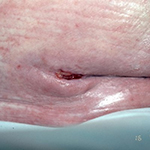
- Macerated or soggy
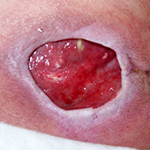
- Erythema/ inflammation/ cellulitis

- Oedematous/ swelling

- Excoriated

- Induration
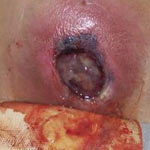
- Fibrotic / scarred
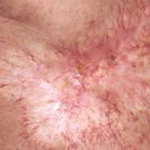
- Hyperkeratotic
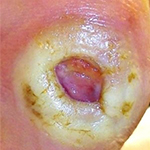
- Callus
Exudate
- Exudate amount: Nil / Low; Small / Moderate; High; Large / Copious
- Exudate type: Serous / clear (amber coloured); Haemoserous (pink), Purulent (thick, opaque, creamy)
Wound Edges
- Epithelialisation (i.e. clearly defined attached edges)
- Indistinct / Diffuse, Macerated (i.e. moist, wet, soggy)
- Rolled edge

- Raised edge
- Tracking, tunnelling or sinus tract
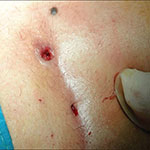
- Undermined unattached edges

Courtesy of National Library of Medicine
Odour
- Strong
- Foul
- Pungent
- Faecal
- Musty
- Sweet
Wound Bed
- Granulation (i.e. dark pink / red, clean)
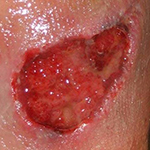
- Epithelialisation (i.e. pink, clean)
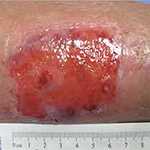
- Slough (i.e. white, yellow, stringy tissue)
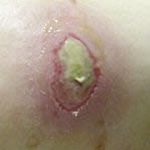
- Necrotic / Eschar (i.e. black)
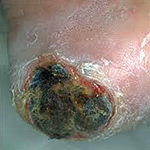
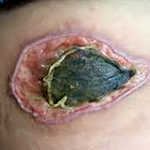
- Hyper - granulation (i.e. dark pink, red, bumpy)

Temperature of surrounding skin
- Normal
- Warm
- Hot
- Cool
Pain
- Location
- Intensity (Pain score /10)